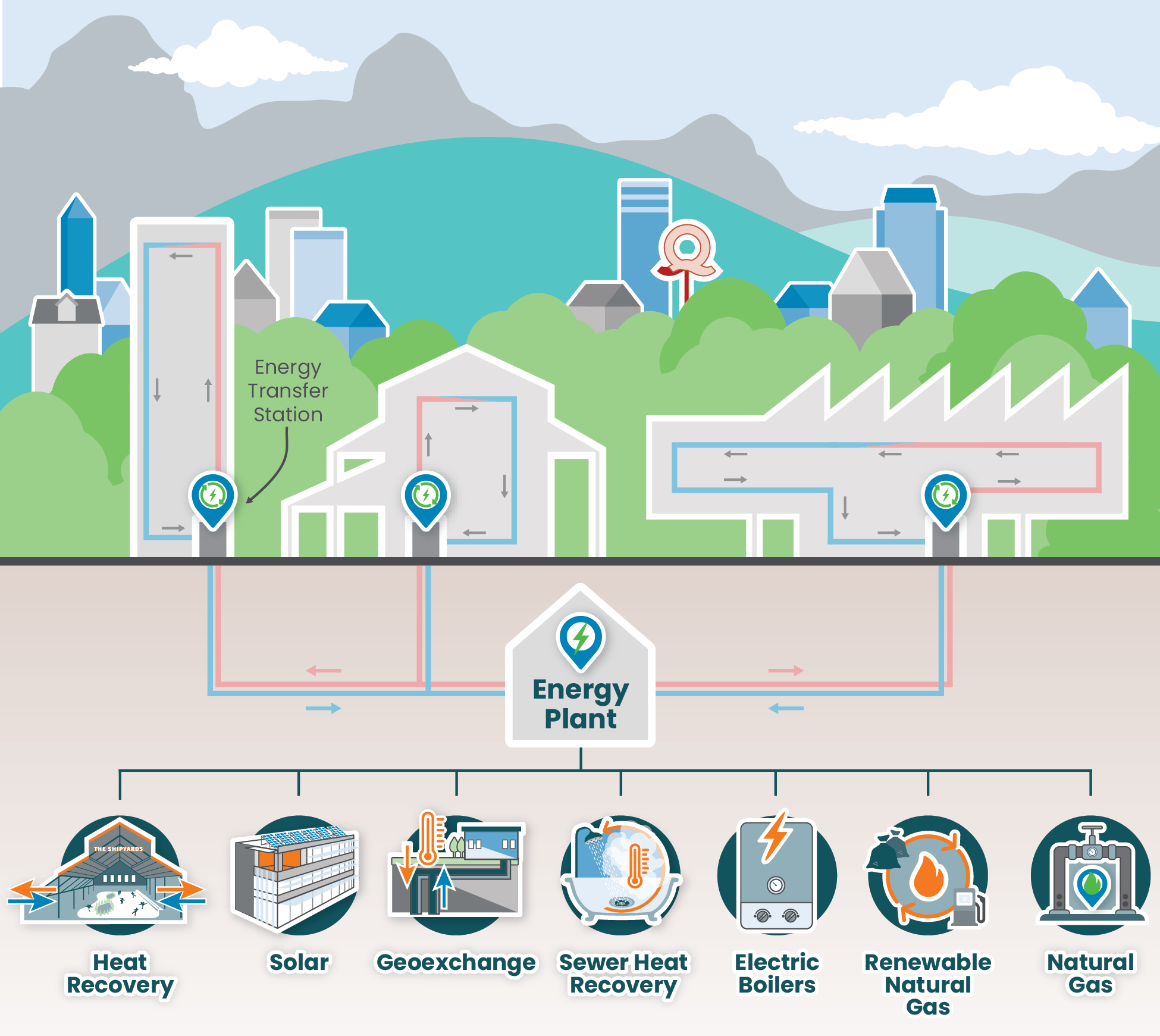Lonsdale Energy operates the City of North Vancouver’s award-winning community energy system, providing heat and hot water to about 18,000 residents in more than 110 residential, business and public buildings in the Lower Lonsdale, Central Lonsdale, Moodyville and Marine Harbourside areas.
Lonsdale Energy is the largest municipally-owned community energy system in Western Canada, serving about a quarter of City of North Vancouver residents. Think of it as a shared municipal service, like parks or local roads, except that it’s fully funded by service fees so has no impact on property taxes. Learn more about Lonsdale Energy.
Community energy systems, sometimes called district energy systems, supply heat or cooling from a central energy centre to multiple buildings in a neighbourhood.
Lonsdale Energy primarily focuses on supplying heat. Buildings connected to Lonsdale Energy do not require their own heating systems—our energy centres supply all the energy they need for heating and hot water. The buildings may also be connected to other utility providers that supply electricity for lights and electronics, or natural gas for appliances.
Community energy systems are an innovative and sustainable way to heat homes and buildings. Learn more about the value of community energy.
The graphic below shows Lonsdale Energy’s continuous loop system, which includes energy production, distribution, use and recirculation. These four steps are described below.

Here's how the process works:
The process begins at an energy centre, where heat is produced using a variety of energy sources simultaneously. Our sources currently include natural gas, renewable natural gas, geoexchange, solar, and heat recovery. In 2025, electric boilers will be added to the system, and by 2027, sewer heat recovery will provide a large portion of the energy needed.
It all starts at one of eight energy centres, where heat is produced using a mix of energy sources:
Electric boilers are being added to the system in 2025. By 2027, our new sewer heat recovery plant will deliver a large portion of our energy needs, using a process that extracts heat energy from untreated sewage. Learn more about this exciting project.
From the energy centres, heated water is carried by underground pipes directly to all the buildings in the community energy system. This water is extremely hot, reaching temperatures of 75°C to 80°C.
When the hot water arrives at the building, it passes through a heat exchanger that transfers the heat into the building’s heating distribution system.
The heat is cycled throughout the building, allowing customers to use it heat their homes, have a hot shower, or run their dishwasher.
Any remaining heat energy that isn’t used in the buildings is returned to the energy centre, where it's reheated and then recirculated back into the system.
This continuous loop ensures that energy isn't wasted.
